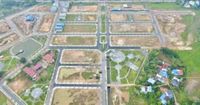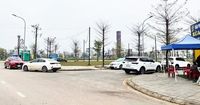In recent months, the real estate market in Vietnam has experienced a surge in interest, particularly in land transactions across various provinces. According to data from Batdongsan.com.vn, March 2025 marked a significant increase in demand for land in Hanoi and other provinces, with search volumes rising sharply. In Hanoi, the search demand increased by 52% compared to February 2025, while Ho Chi Minh City saw a 31% increase, and other provinces recorded a remarkable 54% rise.
The average asking price of land also saw a notable uptick. In March 2025, land prices in Hanoi increased by 42%, in Ho Chi Minh City by 7%, and in other provinces by a staggering 67% compared to January 2023. This price growth reflects a broader trend in the Northern provinces, where the selling prices have risen significantly. For instance, in the first quarter of 2025, the selling price of land in Hung Yen increased by 55%, Bac Ninh by 46%, and Hanoi by 42%.
Interestingly, the demand for land is not just limited to major cities. Investors have increasingly turned their attention to less expected areas, such as Ninh Binh, Phu Tho, Quang Nam, Bac Giang, and Thai Binh, where interest surged dramatically. In March alone, Ninh Binh saw a staggering 122% increase in land interest compared to February, while Phu Tho and Quang Nam followed closely with increases of 110% and 107%, respectively.
Mr. Dinh Minh Tuan, the Regional Director of the Southern region at Batdongsan.com.vn, commented on the ongoing trend, stating, "The search volume and land prices in the markets all increased after Tet, especially in Hanoi and provincial markets." He emphasized that the Northern provinces are experiencing a wider and higher price distribution than those in the South. In contrast, the Southern provinces exhibited milder price fluctuations, with Dong Nai increasing by 30%, Binh Duong by 25%, and Ho Chi Minh City by just 5%.
The real estate market's recovery post-Tet has not only been confined to land transactions. The overall demand for real estate for sale in Hanoi and other provinces was notably active in the first weeks of March. Compared to February, search demand in Hanoi increased by 27%, while other provinces saw a significant 75% rise, and Ho Chi Minh City recorded a 20% increase.
Among various segments, land has emerged as the most dynamic area, with a 50% increase in search interest compared to February 2025. The number of land postings also grew by 34%, second only to private houses, which saw a 37% increase. A survey conducted among brokers indicated that land transactions were perceived as the strongest growth segment in the first quarter of 2025. Specifically, 44% of survey participants considered land transactions stable compared to the same period last year, while 24% reported an increase in transactions.
In the Central region, coastal areas bordering Da Nang have attracted significant interest, particularly in Quang Nam. The asking prices for land in Da Nang also reflected this growing demand, with prices in Cam Le district rising by 80%, Lien Chieu district by 75%, and Hoa Vang district by 50% compared to January 2023.
The rising interest in land is also linked to broader economic trends and infrastructure developments. The ongoing discussions about province mergers have heightened interest in areas expected to become new administrative centers. Regions with lower price levels, particularly in the Northern provinces, are being targeted by investors looking for potential growth opportunities. Areas such as Ninh Binh, Lang Son, Bac Giang, and Hai Duong have become hotspots for buyers seeking investment.
However, experts caution that while the demand for land is increasing, investors need to remain vigilant against potential market bubbles. Proper due diligence regarding local land prices and understanding the implications of urban planning changes are crucial for mitigating risks and ensuring profitable investments.
As the real estate landscape continues to evolve, the disparity between Northern and Southern markets remains evident. The Northern provinces are experiencing a broader range of price increases, while the Southern regions are seeing more stable conditions. This divergence highlights the need for investors to carefully analyze market conditions in specific areas and segments to optimize their investment strategies.
In conclusion, the Vietnamese real estate market is currently in a state of flux, with land transactions leading the charge in growth. As interest spreads beyond traditional hotspots, investors must navigate this dynamic landscape with caution, ensuring they make informed decisions based on thorough market analysis.






